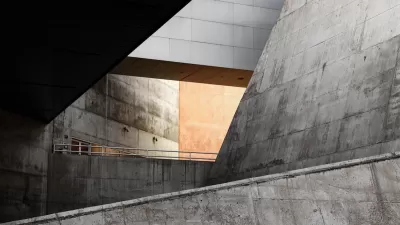Infill development is a great concept, but obstacles can make it difficult, and more expensive.
In a remarkable convergence of views on Albuquerque infill, National Association of Industrial and Office Properties state chapter and Bohannan Huston president Brian Burnett and 1000 Friends of New Mexico executive director Randolph Barnhouse stress in their New Mexico Business Weekly guest columns the need for wide public-private cooperation to make infill easier and economically viable by removing procedural, financial and public obstacles. (Summary courtesy of Smart Growth News.)
"If we want infill, the city government, neighborhoods and developers must work together to make it happen," writes Burnett, noting that some local developers said they would "do more infill projects, if they could find the land."
"People often assume infill is cheaper and easier because streets and utilities are in place. It's not. Water and sewer lines are often too small and too old. Curbs, gutters and sidewalks must be replaced. And if the project involves restoring or demolishing older buildings, asbestos and mold are costly problems. Another assumption is that Albuquerque can absorb its growth through infill. According to city planners, Albuquerque has more than 8,000 acres within today's boundaries. It sounds like a lot, but how usable is it?"
Be sure to see both articles:
Thanks to Smart Growth News
FULL STORY: Infill is great as a concept, but is often hard to execute

What ‘The Brutalist’ Teaches Us About Modern Cities
How architecture and urban landscapes reflect the trauma and dysfunction of the post-war experience.

‘Complete Streets’ Webpage Deleted in Federal Purge
Basic resources and information on building bike lanes and sidewalks, formerly housed on the government’s Complete Streets website, are now gone.

The VW Bus is Back — Now as an Electric Minivan
Volkswagen’s ID. Buzz reimagines its iconic Bus as a fully electric minivan, blending retro design with modern technology, a 231-mile range, and practical versatility to offer a stylish yet functional EV for the future.

Healing Through Parks: Altadena’s Path to Recovery After the Eaton Fire
In the wake of the Eaton Fire, Altadena is uniting to restore Loma Alta Park, creating a renewed space for recreation, community gathering, and resilience.

San Diego to Rescind Multi-Unit ADU Rule
The city wants to close a loophole that allowed developers to build apartment buildings on single-family lots as ADUs.

Electric Vehicles for All? Study Finds Disparities in Access and Incentives
A new UCLA study finds that while California has made progress in electric vehicle adoption, disadvantaged communities remain underserved in EV incentives, ownership, and charging access, requiring targeted policy changes to advance equity.
Urban Design for Planners 1: Software Tools
This six-course series explores essential urban design concepts using open source software and equips planners with the tools they need to participate fully in the urban design process.
Planning for Universal Design
Learn the tools for implementing Universal Design in planning regulations.
City of Albany
UCLA Lewis Center for Regional Policy Studies
Mpact (formerly Rail~Volution)
Chaddick Institute at DePaul University
City of Piedmont, CA
Great Falls Development Authority, Inc.
HUDs Office of Policy Development and Research


























